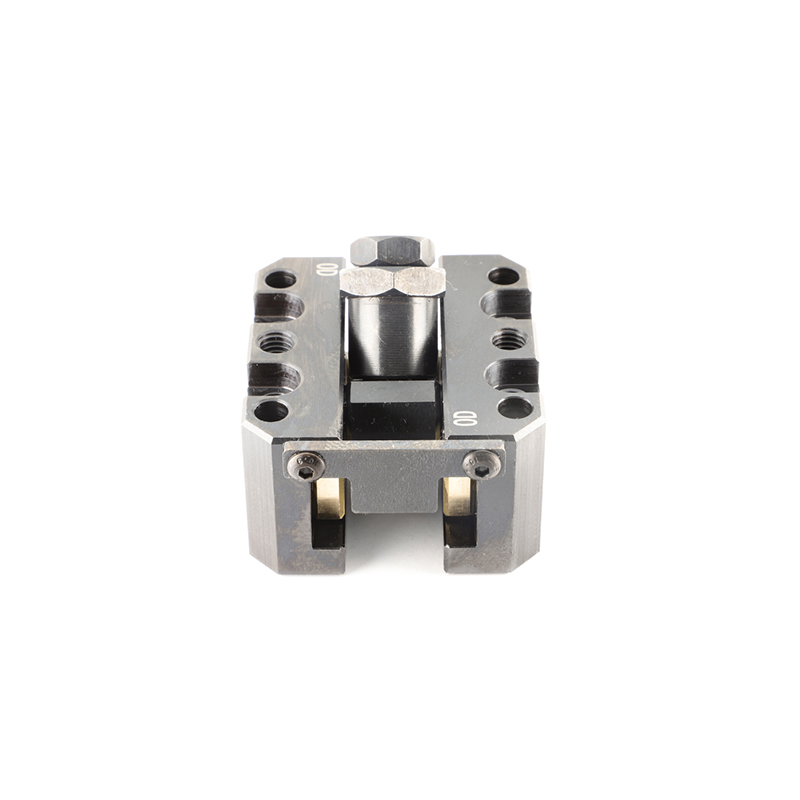The main templates of continuous molds include punch fi […]
The main templates of continuous molds include punch fixing plates, press plates, concave templates, etc. The structure design depends on the accuracy of the stamping product, the production quantity, the processing equipment and processing methods of the mold, and the maintenance methods of the mold. There are the following three types Forms: (1) block type, (2) yoke type, (3) embedded type.
1. Monolithic
The monolithic template is also called an integral structure type, and its processing shape must be closed. The monolithic template is mainly used for molds with simple structure or low precision. The processing method is mainly cutting (no heat treatment is required). The heat-treated template must be subjected to wire cutting or electric discharge machining and grinding. When the template size is long (continuous mold), two or more pieces will be used together.
2. Yoke
The central part of the yoke template is processed into a groove shape to assemble blocks. Its structure depends on the application requirements, and the groove part can be constructed with other templates. The advantages of this yoke template structure are: easy groove processing, adjustable groove width, good processing accuracy, etc. But low rigidity is its disadvantage.
The design considerations of the yoke template are as follows:
(1) The fitting of the yoke plate structure and the block parts adopts intermediate fitting or light fitting. For example, adopting strong press fitting will change the yoke plate.
(2) The yoke plate has the holding function of the block parts. In order to withstand the side pressure and surface pressure of the block parts, it must have sufficient rigidity. In order to make the groove of the yoke plate and the block parts tightly combined, the corners of the grooves are processed for clearance. If the corners of the groove of the yoke plate cannot be processed for clearance, the block parts must be processed for clearance.
(3) The division of block parts should also consider its internal shape, and the reference plane must be clear. In order to prevent deformation during stamping, attention should be paid to the shape of each block part.
(4) When the yoke plate is assembled with many block parts, the pitch changes due to the accumulated error in the processing of each mold insert core. The solution is to design the middle block part in an adjustable way.
(5) The block parts adopt a side-by-side mold structure. Because the block parts will be subjected to lateral pressure during the punching process, there will be gaps between the block parts or the inclination of the block parts. This phenomenon is an important cause of poor stamping such as poor stamping dimensions and chip clogging, so adequate countermeasures must be taken.
(6) There are five ways to fix the block parts in the yoke plate according to their size and shape: A. Fix with locking screws, B. Fix with keys, C. Fix with snap keys, D. Fix with shoulders Fix, E. The above pressing parts (such as the guide plate) are pressed and fixed.
3. Built-in
Round or square recesses are processed in the template, and the block parts are embedded in the template. This template is called an inlay structure. This structure has a small machining tolerance, high rigidity, and accuracy and reproducibility during decomposition and assembly. good. Due to the advantages of easy machining, machining accuracy determined by the working machine, and less final adjustment engineering, the embedded template structure has become the mainstream of precision stamping dies, but its disadvantage is that it requires a high-precision hole processing machine.
When the continuous stamping die adopts this template structure, in order to make the template have high rigidity requirements, an empty station is designed. The precautions for the embedded template construction are as follows:
(1) Processing of embedded holes: Vertical milling machines (or fixture milling machines), integrated processing machines, fixture boring machines, fixture grinders, wire-cut electrical discharge machines, etc. are used for processing the embedded holes of the template. The machining standard for inserting holes, when using a wire-cut electric discharge machine, in order to improve its machining accuracy, two or more wire-cutting processes are performed.
(2) Fixing method of inserts: The determinants of the fixing method of inserts are the accuracy of processing, the ease of assembly and disassembly, the possibility of adjustment, etc. There are four ways to fix the inserts: A. Fix with screws, B. Fix with shoulders, C. Fix with toes, and D. Fix the upper part with plates. The method of fixing the inserts of the concave template also adopts press-fitting. At this time, the relaxation result caused by the processing thermal expansion should be avoided. When using the round mold inserts to process irregular holes, the rotation prevention method should be designed.
(3) Considerations for assembly and disassembly of inserts: The processing precision of inserts and their holes is required to be high for assembly operations. In order to obtain that even a slight dimensional error can be adjusted during assembly, it is advisable to consider the countermeasures in advance. The specific considerations for insert processing include the following five items: A. With a press-in lead-in part, B. Adjust the insert with spacers The press-in state and the correct position of the piece, C. The bottom surface of the insert is provided with a hole for pressing out. D. Screws of the same size should be used when tightening with screws to facilitate locking and loosening. E. To prevent the direction of assembly Mistakes should be designed for fool-proof chamfering.
